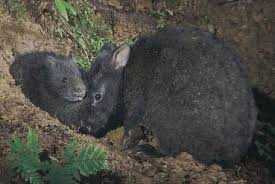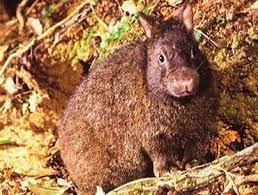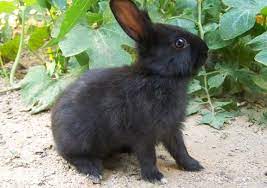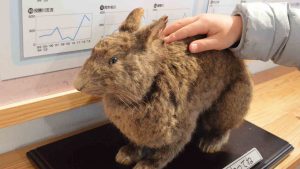Everything You Need To Know About Amami Rabbit
The Amami rabbit is named a living fossil due to its old roots. These rabbits are incredibly such an old breed, originating from ancient forebears on the Japanese islands. They are observed as critically threatened today, so they are not found in captivity situations of any kind, except they are under the personal monitoring of wildlife specialists. These rabbits used to grow on the Japanese mainland, but they have long ago died out. Unless you are visiting their natural habitat, you will likely never see one of these animals in your lifetime. But that doesn’t mean that we should not learn about these incredible creatures and their donation to island life.
The Amami rabbit is a descendant of old rabbits found in China and Eastern to Central Europe. Unlike several wild rabbit breeds, Amami’s have unique dark fur setting them apart from a few rabbit cousins. Amami Rabbits are wild rabbits, Amami’s founded on two small islands in Japan within southern Kyushu and Okinawa Amami and Tukunoshima. Their numbers are decreasing today due to population increase, natural predation, and the reduction of their original habitat. Let’s continue reading about this breed below.
Do Amami Rabbits Make Good Pets?
 You won’t manage to keep the Amami Rabbit as a pet because it is a wild rabbit. The Amami rabbit is a nighttime animal that remains inside its burrows during the day and can be out searching at night. And because this animal is night-loving, it’s so difficult to spot and may only be detected hardly roaming the forest floor and roads. When a person approaches the Amami rabbit, it will flee into nearby shrubs. This species can swim, but the regularity of their swimming habits survives unknown.
You won’t manage to keep the Amami Rabbit as a pet because it is a wild rabbit. The Amami rabbit is a nighttime animal that remains inside its burrows during the day and can be out searching at night. And because this animal is night-loving, it’s so difficult to spot and may only be detected hardly roaming the forest floor and roads. When a person approaches the Amami rabbit, it will flee into nearby shrubs. This species can swim, but the regularity of their swimming habits survives unknown.
This rabbit can communicate by using vocalizations and noises made by hitting its hind feet on the ground. These signs were created when predators or humans accessed their area. The mother will also make the sound to tell the newborns that she has returned to their nest. The Amami rabbit can also get calls that are the same as the sound made by pikas. There are 3 to 4 short calls to interact with fellow rabbits that are nearby.
What Does Amami Rabbit Eat?
Amami Rabbits are wild rabbits that are herbivorous. They will eat all of the parts of the plant, for example, the roots, rind, seeds, weeds, flowers, and leaves. In bondage, this rabbit can eat commercially prepared rabbit pellets, greens, seeds, and fruits.
How Big Is An Amami Rabbit?
 Like other rabbit species, these rabbits have some natural attributes, but they are very different from other rabbit species. In comparison to their male counterparts, female rabbits are somewhat bigger. Females have a common body length of 452mm, on the other hand, males have a range of 451mm. As females are larger, they are dimorphic sexually. Male rabbits have a long tail of 25 to 35cm, while females have a tail range of 25 to 32cm. The mass of female rabbits is 2.2 kg, whereas male rabbits are slightly low in mass at 2.1 kg.
Like other rabbit species, these rabbits have some natural attributes, but they are very different from other rabbit species. In comparison to their male counterparts, female rabbits are somewhat bigger. Females have a common body length of 452mm, on the other hand, males have a range of 451mm. As females are larger, they are dimorphic sexually. Male rabbits have a long tail of 25 to 35cm, while females have a tail range of 25 to 32cm. The mass of female rabbits is 2.2 kg, whereas male rabbits are slightly low in mass at 2.1 kg.
Is Amami Rabbit Aggressive?
Yes, Amami Rabbit wounds are dangerous because the animal may have rabies. Also, rabbit teeth may be sharp, and along, this can easily cut off skin and meat, creating a deep and infected scar. The most obvious reason a rabbit or wild rabbit will hit a person is that they are afraid. Wild rabbits’ first skill will be to run away and hide from anything that shocks them, they can quickly become aggressive and attack or push if they feel ambushed. Most rabbits or wild rabbits who always attack humans out of fear have seen their aggressive actions will get people to go away. At first, they likely changed to jumping and biting out of fear, knowing that there was no place to escape. Following the aggressive ways that worked to get people to go away the first time, the wild rabbit learned to attack people more speedily. Finally, this behavior becomes a way of making the rabbit aggressive to humans all the time.
What’s The Average Lifespan Of An Amami Rabbit?
According to another analysis, its lifespan is ten years, but still, it is not proven. Biologists are struggling daily to find the answers to those issues that are still confusing people.
Does Amami Rabbit have health issues?
 Little is known about the health status of an Amami Rabbit. But most wild rabbits are good, and the most common condition that the Amami may be concerned with is diseases such as mites, ticks, and insects. Worms can additionally be a problem because they are usually present in their surroundings. And wild rabbits are not protected from common rabbit diseases which affect domesticated rabbits. That is why you must watch your rabbit’s health and character. Consider that any kind of change could be because of an illness, as first as your pet opens its eyes, take it to the vet for vaccinations and tests. The vet will perform tests to assess the health and development of your pet.
Little is known about the health status of an Amami Rabbit. But most wild rabbits are good, and the most common condition that the Amami may be concerned with is diseases such as mites, ticks, and insects. Worms can additionally be a problem because they are usually present in their surroundings. And wild rabbits are not protected from common rabbit diseases which affect domesticated rabbits. That is why you must watch your rabbit’s health and character. Consider that any kind of change could be because of an illness, as first as your pet opens its eyes, take it to the vet for vaccinations and tests. The vet will perform tests to assess the health and development of your pet.
He will also check small and younger rabbits because they are prone to digestive diseases like enteritis, bloat, and stasis. These may affect wild rabbits or rabbits that are less than two months of span. Check your pet for ear or fur bacteria. As mentioned, the most popular are mites, insects, and ticks. Rabbits affected by these parasites normally have poor hygiene and are kept in dirty surroundings and enclosures. Also, check for unstable movement, restlessness, teeth grating, and endless hours of sleeping because these could be in serious conditions. A rabbit must be managed for worms at least twice a year.
How Do You Bond With An Amami Rabbit?
 The best method to make buddies with a wild rabbit is to provide him with some food. You can give them a slice of fruit or green veggies. However, keep the portions small and do not offer citrus fruits such as pineapples. At the start, give a trail of food that your wild rabbit will follow. This way, the wild rabbit can decide how much proximity he is comfortable with. Rabbits can sense passions, and therefore you should always approach them with tenderness and love. If you are mad, do not go near them. They can misunderstand your anger pointed towards them.
The best method to make buddies with a wild rabbit is to provide him with some food. You can give them a slice of fruit or green veggies. However, keep the portions small and do not offer citrus fruits such as pineapples. At the start, give a trail of food that your wild rabbit will follow. This way, the wild rabbit can decide how much proximity he is comfortable with. Rabbits can sense passions, and therefore you should always approach them with tenderness and love. If you are mad, do not go near them. They can misunderstand your anger pointed towards them.
When the wild rabbit is enjoying being around you, talk to them in a slow loving tone when they approach you. Let the wild rabbits smell you, to be sure. Dogs and cats are predators of wild rabbits, and if you smell like them, a wild rabbit will hesitate in threatening you. Do not try to make any sudden moves and sit down on the ground. A drop in height will make the wild rabbit feel less scared. Let your rabbit sniff your hand, then stroke it lightly on its head and back.
Final Thought
The excellent Amami rabbit is a rare and beautiful species. Hopefully, with more information and education about wildlife, we can keep the longevity of many threatened species, not just one. We all must do our part ecologically to assure that the amounts of these dwindling populations start to increase once more.
https://www.rabbitproducersassociation.com/amami-rabbit/https://www.rabbitproducersassociation.com/wp-content/uploads/2021/07/Amami-Rabbit.jpghttps://www.rabbitproducersassociation.com/wp-content/uploads/2021/07/Amami-Rabbit-150x150.jpgUncategorizedThe Amami rabbit is named a living fossil due to its old roots. These rabbits are incredibly such an old breed, originating from ancient forebears on the Japanese islands. They are observed as critically threatened today, so they are not found in captivity situations of any kind, except they...FizleenFizleen fizleenmazlanx@gmail.comAuthorNetherland Dwarf Rabbit



Leave a Reply